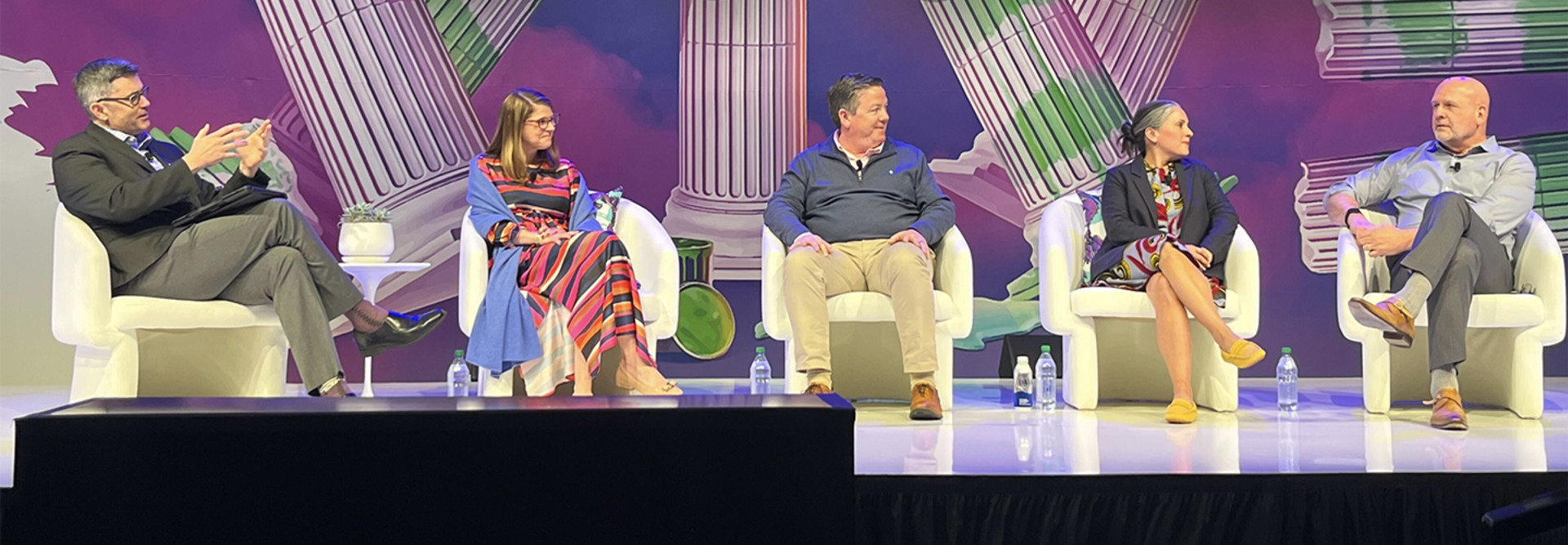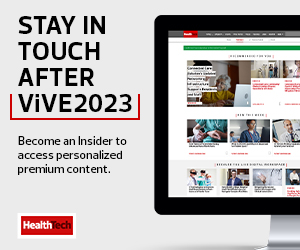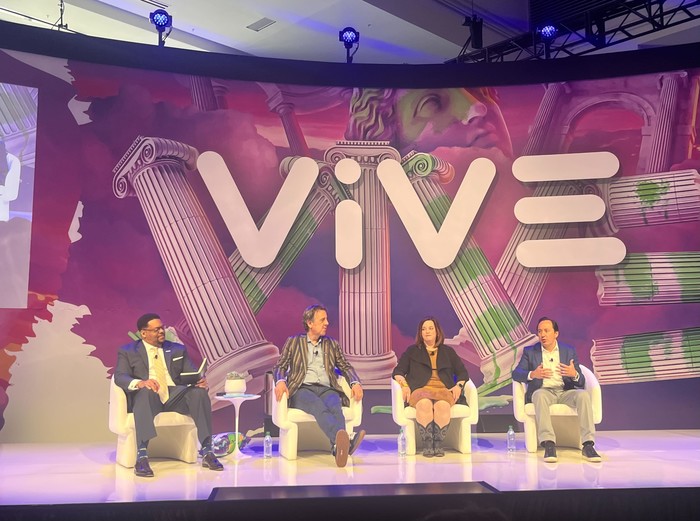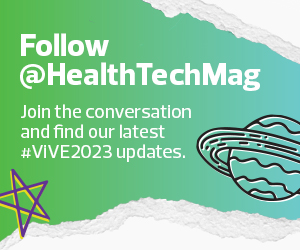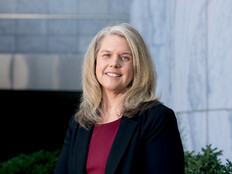From left: Nordic Global Director of Digital Health Jason Griffin, CHIME International Executive Program Adviser Andy Kinnear, Cook Children’s Health Care System CIO Theresa Meadows and Baptist Health Chief Digital and Information Officer Aaron Miri discuss how the CIO role is evolving in healthcare.
The industry is facing clinical staff shortages, as well as a shortage of IT staff. Still, IT needs are evolving rapidly.
While healthcare IT still needs people to maintain legacy IT infrastructure, Meadows said, it’s also important to begin to fill in the gaps on health IT teams, such as hiring people to innovate on top of the electronic health record (EHR) and with cloud experience.
She added that the rise of remote work means healthcare organizations are now competing with the entire U.S. for staff.
“You have to be comfortable with having people working from other locations, but we can’t lose sight of the reason why we’re here,” she said, adding that remote workers sometimes can forget that there are doctors and nurses at the bedside who need support. “We have to balance both of those needs.”
Miri added that remote and hybrid work are here to stay.
“The genie is out of the bottle, but where that lands is still to be determined,” he said.
EXPLORE: How remote patient monitoring enhances nurse workflows.
Remote work levels the playing field and can enable more inclusivity. Miri said. It’s important that everyone, whether in the office or remote, is graded on the merit of their work.
Another way to recruit includes developing the skill sets of passionate people already within the organization.
“If you see the energy and the passion, invest in it,” said Kinnear.
Despite the IT staff shortage, there is still hesitancy around hiring people from outside of healthcare. However, panelists said that hesitation is often for good reason.
“It’s the lack of pure understanding about our business. There’s a fundamental disconnect. There are people who come into our organization from other industries and do quite well if they immerse themselves in the culture and really try to understand and learn,” Meadows said. “But if they think they’re going to come in and fix everything, it’s an absolute turn-off. They have to be about collaboration rather than thinking they’re going to fix everything.”
Kinnear agreed that success for outsiders depends upon their attitude. He said that those who have been successful have been respectful and realized that healthcare is more complicated than it appears from the outside. As a result, they’ve been able to apply learnings from other sectors.
Bridging the Gap Between Nurses and Health IT
With the growth of digital technology and the importance of data in healthcare has come the need for more clinical informaticians in the industry.
“It’s critically important that we have clinical voices partnered with technology,” said Jerry Chamberlain, vice president of client relationships for healthcare at Oracle Health, which he said employs more than 1,000 clinicians in areas such as product development and strategic planning.
However, the demand for nurses and other clinicians in technology roles can pull them away from the clinic or bedside amid a nurse shortage.
“We need operational experts at the table when developing solutions. I can’t give those people up now that I’m in the chief nurse role,” said Nicole Kerkenbush, chief nursing and performance officer for Monument Health. “I want to keep them interested in staying at the bedside and not going to work for a CIO. We need to be open to different models of work environments and roles.”
She added that the benefit of keeping clinicians working on product development at the bedside is that it gives them an opportunity to remember what it’s like to operate in that workflow and care for patients.
Stanford Medicine Children’s Health focuses on including bedside clinicians in the creation and implementation of technology solutions, explained Shanna Perales, director of clinical informatics for the organization. This process is embedded in Stanford Children’s Health’s nursing governance and has been expanded to include ambulatory nurses, case managers and the frontline staff driving EHR optimization.
“It’s a tremendous way to get feedback from bedside nurses and keep people interested,” Perales said.
Kerkenbush emphasized that it’s important to have a shared governance and give nurses an outlet. If they have nowhere to go, they can become frustrated, which can lead to burnout and disenchantment, she said: “It takes their joy away.”
Pete Marks, vice president and CIO for WakeMed Health and Hospitals, said he walks the floor and asks physicians, nurses and clinicians about their experiences with technology to understand what they’re really going through and to create a bond of trust between clinical and IT.
Chamberlain agreed that doing an IT round and getting direct feedback lets end users know that people are paying attention.
Other clinical staff shortages also impact nurses, as they often get asked to take on tasks outside their normal scope of work.
“We’re at the point now where a nurse can’t take it on. It isn’t acceptable anymore,” Kerkenbush said. “I’m glad we’re finally getting there.”
She reiterated that clinical and IT leaders must be open to doing something different, such as automating the collection of vital signs or letting people check their own blood pressure and report on it using a machine like the ones used outside Walmart pharmacies. As a leader, Kerkenbush said, she has to be there to break down barriers and give less experienced nurses permission to share their ideas.
“I’ve been so impressed. Those folks who get involved then become invested,” she said. “It’s counterintuitive, but doing something extra as a nurse creates another connection to their purposes, rather than just doing the job and going home.”
Keep this page bookmarked for our coverage of ViVE 2023. Follow us on Twitter at @HealthTechMag and join the conversation at #ViVE2023.



